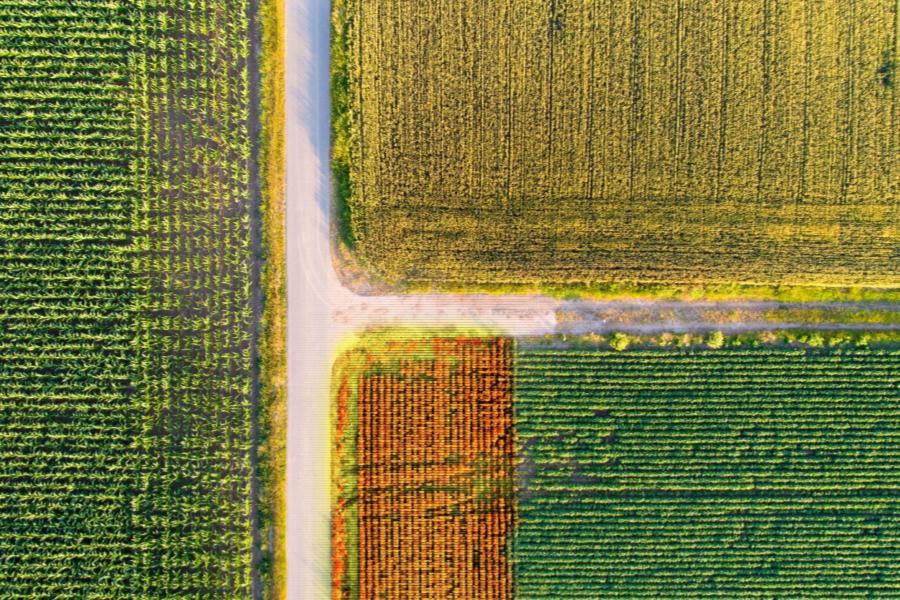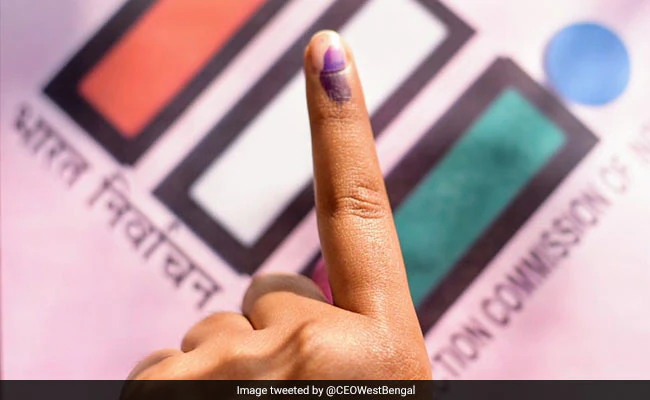COVID-19: We’re committed to keeping students, staff, and faculty safe.
Find updates on operations, resources, and stories.
MINNEAPOLIS/ST. PAUL (03/31/2022) — A new technological approach developed by University of Minnesota researchers will allow key stakeholders to identify important crop types earlier in the season than ever before.
Satellite imagery has long been used by agricultural agencies to tell what crops are grown in the field. This allows stakeholders to forecast grain supplies, assess crop damage due to environmental factors and coordinate supply-chain logistics.
While this information is vital, currently available crop mapping products are unable to provide these statistics early in the farming season. For example, the crop data layer (CDL), a national crop mapping product by the USDA National Agricultural Statistics Service, is often not released until four to six months after the fall harvest. This is due to the lengthy ground information collection process that is required for training the backend algorithm for separating crops from satellite imagery.
In a study recently published in Remote Sensing of Environment, University of Minnesota researchers explain their development of a new method that would allow stakeholders to know where corn and soybean crops are grown as early as July, with similar accuracy to the USDA CDL, and without the need for ground surveys.
With satellite data availability growing rapidly and advances in artificial intelligence and cloud computing, the bottleneck of satellite-based crop type mapping has shifted towards a lack of ground truth labels, which are records of crop types at specific locations. In such cases, scientists have attempted to use outdated labels to identify crops in the target year.
For example, to map crop types in 2022, scientists would develop a model using labels collected in 2021, 2020, or even earlier in order to develop a model when a new ground survey is not available or not feasible. However, this type of model often fails because changes in soil, weather and management practices in a given year can change how crops look in satellite imagery.
To bypass the need for collecting ground labels, the method developed by this research team generates pseudo-labels (they are called “pseudo” because these labels are not collected from fields) in any target year based on historical crop type maps.
This method mimics how humans identify objects based on their relative positions (also called topology relationships) on a picture and uses a computer-vision model to identify corn and soybean based on their topology relationships in a two-dimensional space derived from satellite imagery. These generated pseudo-labels have similar quality to field-collected labels and can be used for the important task of crop type mapping in the early season.
“This is a paradigm-shifting approach that uses computer vision technology to mimic how humans identify different things on photos. This is not only fun but also powerful because it helps to save the time and labor of conducting field surveys and allows us to accurately predict crop types as early as July,” said Zhenong Jin, Ph.D., assistant professor in the Department of Bioproducts and Biosystems Engineering at the University of Minnesota.
“We found stable topology relationships existed for different crops in different years and different countries, indicating that our approach has the potential to be extended to a general framework that works for many different scenarios,” said Chenxi Lin, a Ph.D. candidate and first author of the work advised by Jin.
The study also found:
In addition, the high-quality, early-season crop type maps generated from the proposed approach are also useful for a variety of other activities.
A comprehensive and timely monitoring on the insured croplands is beneficial for insurance companies to better design their products. In addition, the crop acreage and production estimation can help commodity traders better project prices, and hedge accordingly.
As the researchers look ahead, they acknowledge that the implementation of this approach relies on sufficient historical ground truth labels, which is not an issue for resource-abundant regions like the United States, but is a limited resource for regions like Africa.
However, implementing the approach in underdeveloped countries like many in Africa could have more profound implications for the ultimate goal of achieving a food-secure world. The team plans to expand the framework presented in this study to those regions by incorporating other advanced deep learning algorithms to reduce the need for historical labels.
-30-
About the College of Food, Agricultural and Natural Resource Sciences
The University of Minnesota’s College of Food, Agricultural and Natural Resource Sciences (CFANS) strives to inspire minds, nourish people, and sustainably enhance the natural environment. CFANS has a legacy of innovation, bringing discoveries to life through science and educating the next generation of leaders. Every day, students, faculty, and researchers use science to address the grand challenges of the world today and in the future. CFANS offers an unparalleled expanse of experiential learning opportunities for students and the community, with 12 academic departments, 10 research and outreach centers across the state, the Minnesota Landscape Arboretum, the Bell Museum of Natural History, and dozens of interdisciplinary centers.
Researchers are starting to understand the importance of gut fungi in mammals and the ways different environmental factors can shape these fungal communities, which play a crucial role in regulating immune responses.
Carol Cardona, a professor in the College of Veterinary Medicine, and Abby Schuft, an Extension educator focused on biosecurity, speak about the impact of HPAI and what Minnesotans could expect in the coming months.
The Golden Gopher men’s hockey team continued its electric run in 2022, beating Western Michigan to advance to the Frozen Four in Boston.
Three familiar names in Gopher sports won national championships as their seasons concluded: Gable Steveson in wrestling, Sarah Bacon in women’s diving, and Max McHugh in men’s swimming.
A graduate student harnesses metals with memories to make clothes that provide support where needed.
Law student Samia Osman spent her winter break fact-finding and delivering humanitarian aid to her drought-stricken native land.
Author Profile
Latest entries
 राशीफल2024.04.18आज का राशिफल 18 अप्रैल 2024: मेष, कर्क और वृश्चिक राशि के जातकों को धन लाभ के योग हैं, जानिए बाकी राशियों का कैसा रहेगा दिन – GNTTV
राशीफल2024.04.18आज का राशिफल 18 अप्रैल 2024: मेष, कर्क और वृश्चिक राशि के जातकों को धन लाभ के योग हैं, जानिए बाकी राशियों का कैसा रहेगा दिन – GNTTV लाइफस्टाइल2024.04.18मेरी क्रिसमस फिल्म ताज़ा खबरे हिन्दी में – मेरी क्रिसमस फिल्म ब्रेकिंग न्यूज़ हिंदी में – Hindustan
लाइफस्टाइल2024.04.18मेरी क्रिसमस फिल्म ताज़ा खबरे हिन्दी में – मेरी क्रिसमस फिल्म ब्रेकिंग न्यूज़ हिंदी में – Hindustan धर्म2024.04.18सुधा मूर्ति द्वारा लिखित "द सेज विद टू हॉर्न्स: अन्यूश़वल टेल्स फ्रॉम माइथोलॉजी" | – Current Affairs Adda247 in Hindi
धर्म2024.04.18सुधा मूर्ति द्वारा लिखित "द सेज विद टू हॉर्न्स: अन्यूश़वल टेल्स फ्रॉम माइथोलॉजी" | – Current Affairs Adda247 in Hindi टेक2024.04.17'This billionaire tech startup' saw the biggest fall in valuation globally in 2024 – The Times of India
टेक2024.04.17'This billionaire tech startup' saw the biggest fall in valuation globally in 2024 – The Times of India











